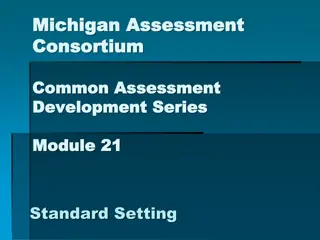
Redriver Location Placement Use Cases | External Systems
In these detailed use cases, explore the scenarios where redrivers are utilized for unidirectional and bidirectional data transmission with specific channel losses and link budgets. Understand the placement, channel losses, and configurations involved in maximizing data transfer efficiency in external systems.
Download Presentation

Please find below an Image/Link to download the presentation.
The content on the website is provided AS IS for your information and personal use only. It may not be sold, licensed, or shared on other websites without obtaining consent from the author. If you encounter any issues during the download, it is possible that the publisher has removed the file from their server.
You are allowed to download the files provided on this website for personal or commercial use, subject to the condition that they are used lawfully. All files are the property of their respective owners.
The content on the website is provided AS IS for your information and personal use only. It may not be sold, licensed, or shared on other websites without obtaining consent from the author.
E N D
Presentation Transcript
REDRIVER LOCATION PLACEMENT 0 EXTERNAL USE
Use Case #1 All unidirectional output case When all 4 channels are used in the same TX direction (DisplayPort, PCIe) X dB Channel loss Y dB Channel loss Redriver W dB Chipset Type-C Z dB link budget Z dB is the link budget in this sub-system s standard requirement X dB of channel loss between chipset s TX and Redriver s RX Redriver is set to recover W dB of channel loss, W X (do not over equalize) Y dB of channel loss between redriver s TX and Type-C connector PCIe Gen 4 (16 Gbps) 20 dB 8 dB 28 dB (X W + Y ) Z USB3.2 Gen 2 @ 10 Gbps, 2dB W 10dB @ 5 GHz Based on approx. -1dB/inch @ 5GHz, -2dB/inch @ 10GHz Approximately 2~9 inch extension USB4 Gen 2 @ 10 Gbps, 2dB W 10dB @ 5 GHz USB4 Gen 3 @ 20 Gbps, 4dB W 18dB @ 10 GHz PCIe Gen 4 @ 16 Gbps, 3dB W 15dB @ 8 GHz 1 EXTERNAL USE
Use Case #2 All unidirectional input When all 4 channels are used in the same RX direction (DisplayPort, PCIe) M dB Channel loss N dB Channel loss Redriver K dB Chipset Type-C L dB link budget L dB is the link budget in this sub-system s standard requirement N dB of channel loss between Type-C Connector and Redriver s RX Minimum N =2dB, Max N = 23dB (B) (Cable + Device) USB3.2 Gen 2 @ 10 Gbps, 2dB N 8.5dB (= 23 6 8.5) USB4 Gen 2 @ 10 Gbps, 2dB N 5.5dB (= 23 12 5.5) PCIe Gen 4 (16 Gbps) 20 dB 8 dB 28 dB USB4 Gen 3 @ 20 Gbps, 4dB N 7.5dB (= 23 7.5 7.5) PCIe Gen 4 @ 16 Gbps, 3dB N 3dB (= 23 20) M dB of channel loss between redriver sTX and chipset s RX (M + N K) L, Use Minimum N, Maximum K below USB3.2 Gen 2 @ 10 Gbps, M+2-10 8.5, M 16.5dB M + N = 18.5dB M + N = 15.5dB M + N = 25.5dB M + N = 18dB USB4 Gen 2 @ 10 Gbps, M+2-10 5.5, M 13.5dB Approximately maximum of 9 inch extension USB4 Gen 3 @ 20 Gbps, M+4-18 7.5, M 21.5dB PCIe Gen 4 @ 16 Gbps, M+3-15 3, M 15dB 2 EXTERNAL USE
Use Case #3 Bidirectional use case When 2 channels are used in the TX direction, and the other 2 channels are used in the RX direction (USB, Thunderbolt) M dB Channel loss N dB Channel loss Redriver W/K dB Chipset Type-C L dB link budget M N Case #1 USB3.2 Gen 2 @ 10 Gbps USB4 Gen 2 @ 10 Gbps USB4 Gen 3 @ 20 Gbps N < 8.5dB N < 5.5 dB N < 7.5 dB 2dB M 10dB 2dB M 10dB 4dB M 18dB Pick Overlap Pick Overlap Case #2 USB3.2 Gen 2 @ 10 Gbps USB4 Gen 2 @ 10 Gbps USB4 Gen 3 @ 20 Gbps M 16.5dB M 13.5dB M 21.5dB 2dB N 8.5dB 2dB N 5.5dB 4dB N 7.5dB Case #3 USB3.2 Gen 2 @ 10 Gbps USB4 Gen 2 @ 10 Gbps USB4 Gen 3 @ 20 Gbps 2dB M 10dB 2dB M 10dB 4dB M 18dB 2dB N 8.5dB 2dB N 5.5dB 4dB N 7.5dB 3 EXTERNAL USE
Use Case #4 Bidirectional use case behind a retimer When the redriver is placed behind a retimer, there is not too much concern that channel N needs to be very short (~4dB) M dB Channel loss N dB Channel loss Redriver W/K dB Chipset Retimer Type-C This configuration is suitable for all application frequencies 1dB M 9dB @ 4.05 GHz Redriver can extend internal channel by up to 2 x 9 dB 2dB M 10dB @ 5 GHz Redriver can extend internal channel by up to 2 x 10 dB (or approximately 2 x 10 inch) 4dB M 18dB @ 10 GHz Redriver can extend internal channel by up to 2 x 18 dB (or approximately 2 x 9 inch) 4 EXTERNAL USE






















